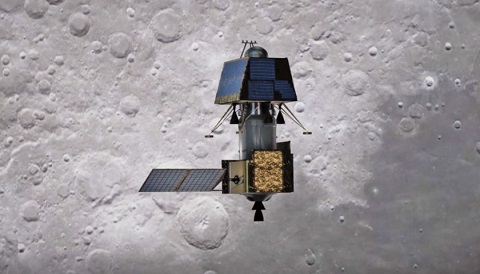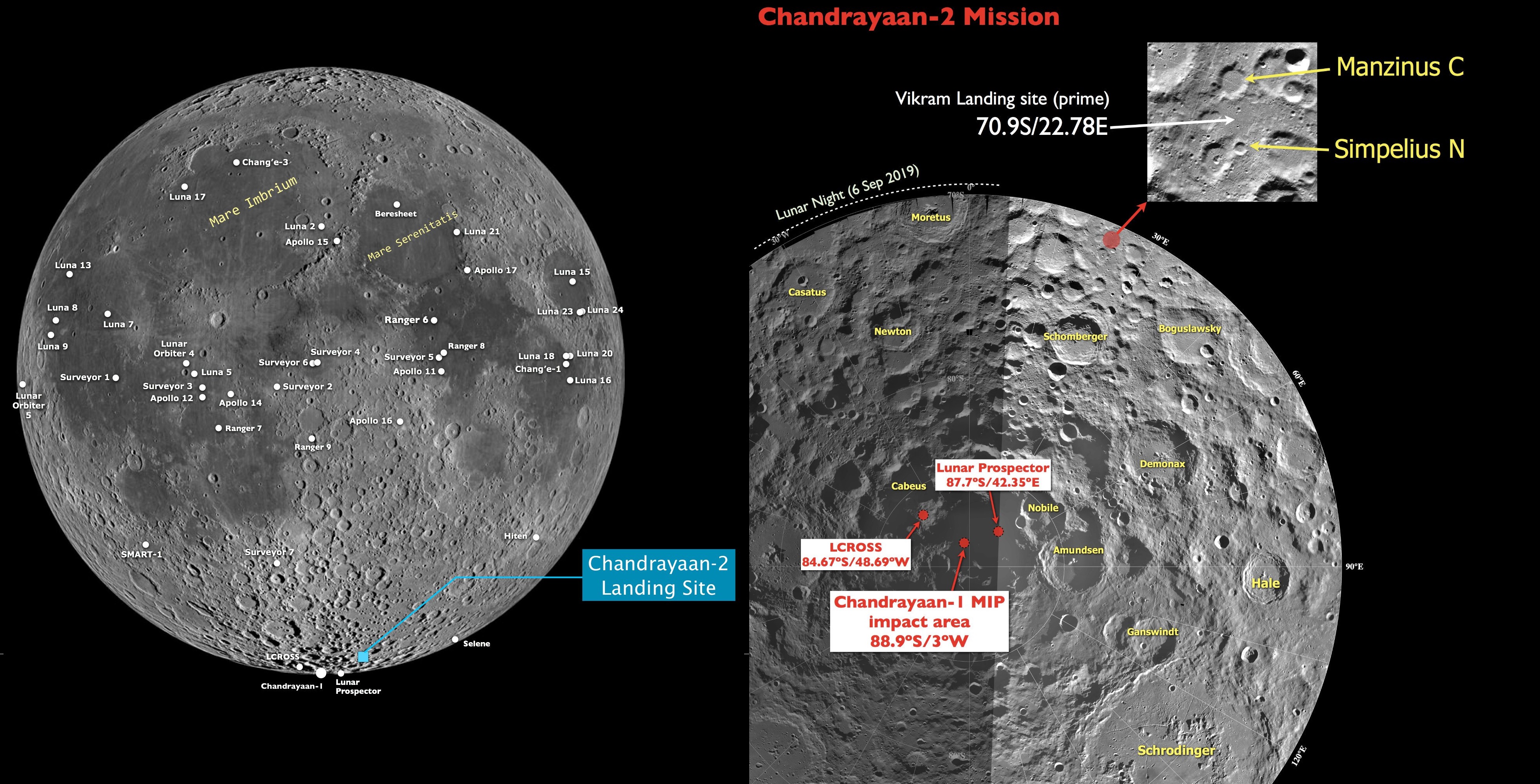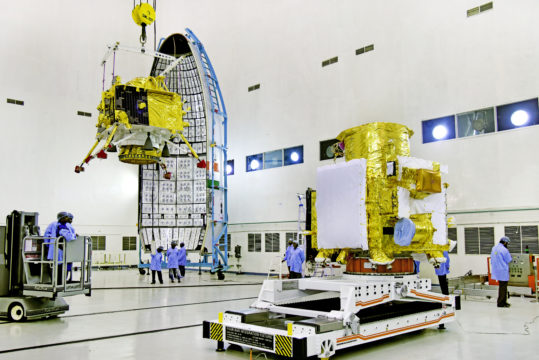India's attempt to land on the Moon resulted in a loss of contact with the Vikram lander.
UPDATE (December 13, 2019): While initial reports suggested the Vikram lander had made it to the lunar surface in one piece, Lunar Reconnaissance Orbiter imaging and the hard work of citizen scientist Shanmuga Subramanian have located the remains, confirming that Vikram broke into several pieces when it landed on the Moon. Read more at EarthSky.org.

ISRO
It wasn't meant to be. After a six-week journey, the Indian Space Research Organization (ISRO) lost contact with Chandrayaan 2's Vikram lander shortly before it was supposed to have touched down on the lunar surface. The Moon landing was set to occur on September 6th at 20:22 UT / 4:22 p.m. EDT. Vikram (Sanskrit for "valor") separated from the Chandrayaan 2 orbiter on September 2th at 7:45 UT for a four-day descent that would take it 62 miles (100 kilometers) down to the lunar surface.
"India is proud of our scientists!" says India's Prime Minister Narendra Modi on Twitter. "They've given their best and have always made India proud. These are moments to be courageous, and courageous we will be!"
The landing attempt occurred on a plain near the lunar south pole on the nearside of the Moon, between the Manzinus C and Simpelius N craters. The site is located near -71°S, and a successful touchdown would have made it the closest soft landing near a lunar pole to date. China's Chang'e 4 mission landed near -47°S latitude on January 3rd. Israel's SpaceIL Beresheet mission failed an attempted soft landing in April.

Created by @hanipersian on Twitter
Launched atop a Geosynchronous Satellite Launch Vehicle (GSLV) rocket from the Satish Dhawan Space Center in India on July 22nd, Chandrayaan 2 took a leisurely path to the Moon via a series of orbital boosts, gradually raising its elliptical orbit around the Earth until it was captured by the Moon's gravity late last month on August 20th.

ISRO / Doordashan News
The Chandrayaan 2 lunar orbiter began mapping the landing site and an alternate site last week, using its Orbiter High Resolution Camera (OHRC). Chandrayaan 2 will continue to map the lunar surface and monitor the lunar environment over the coming year.

ISRO / Doordashan News
The Vikram lander was set to to deploy a small rover named Pragyan (meaning “wisdom” in Sanskrit) shortly after landing. The solar-powered rover and lander made the landing attempt at local sunrise to give them both a maximum two weeks worth of daylight before they succumbed to the cold lunar night.
Listening for Vikram
The lunar landing site for Vikram and Pragyan was selected to search for lunar water ice trapped near the poles. An earlier ISRO mission, the Chandrayaan 1 orbiter, found direct evidence for water ice in craters trapped in perpetual shadow near the lunar poles.

ISRO
The ISRO and NASA's Deep Space Network will continue to listen for Vikram in the coming days, but the prognosis is grim. The Chandrayaan 2 orbiter and NASA's Lunar Reconnaissance Orbiter may image the site as well.
We'll add updates as the story unfolds. If skies are clear tonight, be sure to take a look at the waxing gibbous Moon just past first quarter — now the final resting place for an intrepid landing attempt.
 1
1









Comments
Dobsonite
September 20, 2019 at 3:29 am
I'm probably going to get flamed for this, but I'll say it again; for a nation that only has flush toilets for 50% of it's population, rampant poverty and caste discrimination, it needs to channel this money into bettering the human conditions of their populations (and educating and controlling those populations), instead of using stunts like this, and developing nuclear weapons to put India forth as being "Pussiant" and Proud.
The same can be applied to many first-world countries as well, as regards weaponry. The U.S., with at least half a million homeless, and a good percentage of them dying in the streets, needs to hark to this too.
(We would not be having half the problems with Climate Change, poverty, and pollution of everything, if we had 1/5 the population we do now.)
But as always, we'll get the "people who live in glass houses" argument, one that cannot be wholly refuted save by one analogy: "One man's glass house is a lot sturdier than another's."
Leave this sort of thing to nations that can best afford it. I don't deny that spacefaring has contributed immeasurable gains for human health and welfare, but there are limits despite the shades of gray...and the black and white of it at either end of the question.
In the meanwhile, maybe it's best if space is left to the nations that can afford it, just FOR the sake of suffering humanity.
" “The moral test of government is how that government treats those who are in the dawn of life, the children; those who are in the twilight of life, the elderly; those who are in the shadows of life; the sick, the needy and the handicapped.” -Hubert Humphrey (believe it or not!)
You must be logged in to post a comment.
You must be logged in to post a comment.